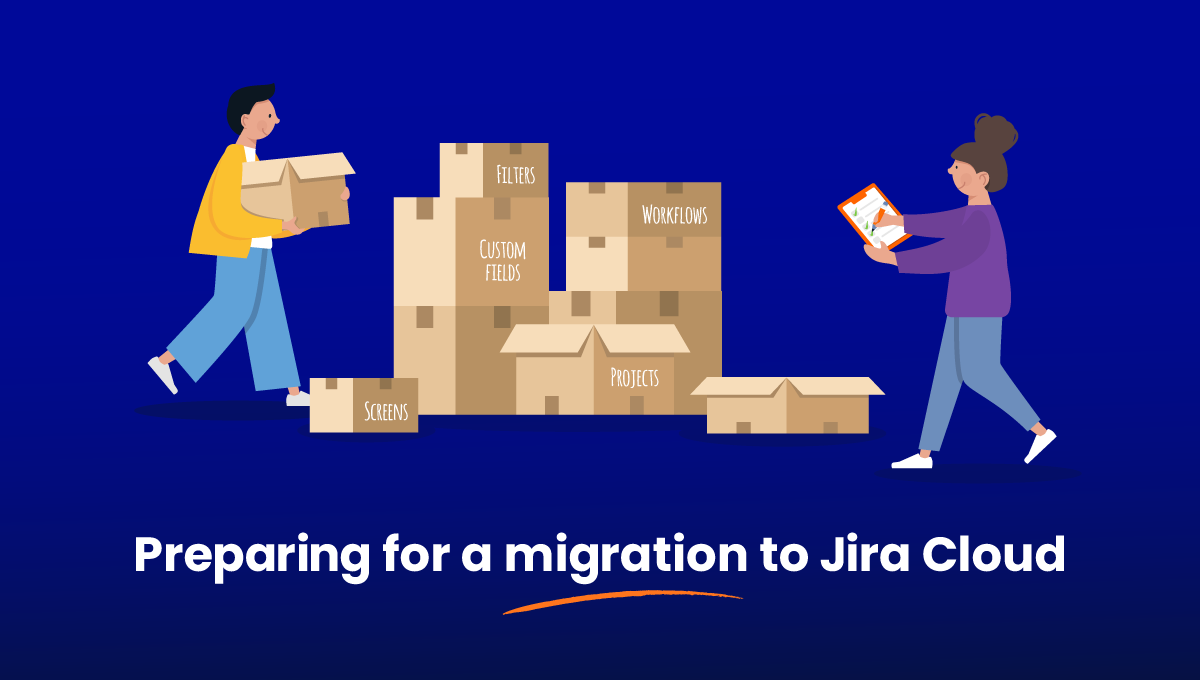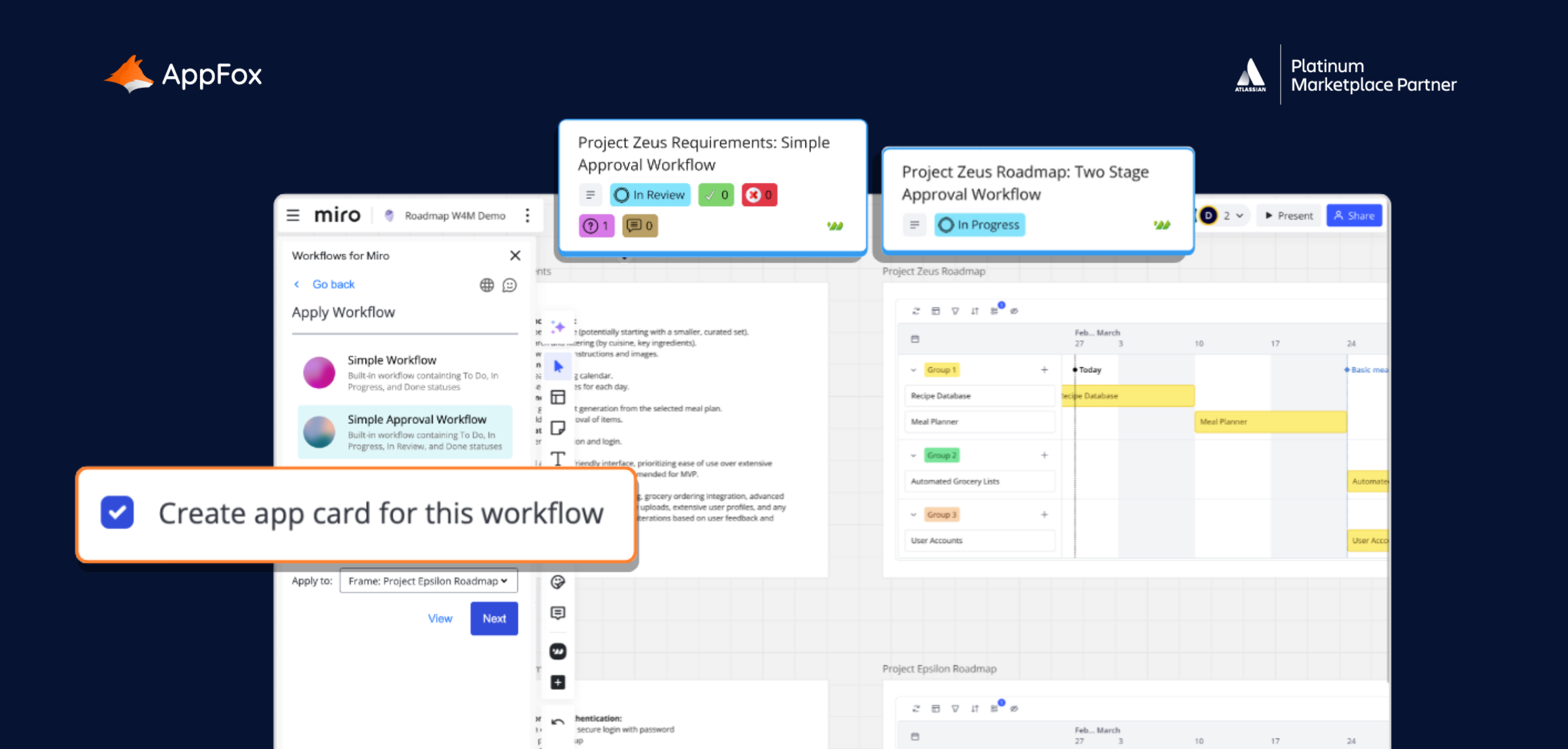If you’re getting ready to move your Jira from Data Center or Server to Cloud, we’re here to help with this ultimate guide.
Whether you’ve already begun to prepare for your migration to Jira Cloud, or are sat scratching your head and wondering where to start, we’ve got you covered.
In this post, we’re going to:
- Explain why migrating to Jira Cloud is a good move (in case you or your stakeholders still aren’t convinced…)
- Deep dive into the key phases of a Jira Cloud migration
- Discuss how you can carry out a thorough site audit and clean up
- Explore different migration methods
- Explore the must-have tools and marketplace apps for a seamless migration
- And more… of course! We’re Jira geeks, so you know we’ve got a lot to say.
Now, as you may know, we (the AppFox team) live and breathe Jira.
But when it comes to the Cloud migration process, we’re also able to draw on the bags of expertise and knowledge from our teammates in Automation Consultants, who are Atlassian Experts. When you read this guide, you can trust that the advice given is built on years of experience and skill.
Are you ready to jump in? Here’s your complete guide to preparing for your migration to Jira Cloud.
Jira migration to the Cloud: A little context
Jira Cloud migrations are a hot topic right now.
A lot of this may be down Atlassian’s announcement that it is removing support for Server products in Feb 2024. This has led to many organizations facing a number of choices:

Moving to Jira Cloud is a big decision but it comes with a ton of benefits.
Whether you have to move to Cloud because Server is being sunset, or you’re currently on Data Center but considering migrating, let’s dive into some of the benefits that you (and your organization) can get from making the jump to Jira Cloud.
Benefits of Jira Cloud
Atlassian is really focused on a Cloud-first future, and we can see why.
Using Jira Cloud unlocks features that aren’t always available on Data Center, such as Atlassian Intelligence or Advanced Roadmaps.
If you have fewer than 1,000 users, Jira Cloud can also work out as more affordable than Data Center.
In terms of infrastructure and maintainence, Jira Cloud is often a more accessible option for organizations – particularly those without a large IT resource in-house. Atlassian and its partners look after all your Cloud hosting, maintenance and security, freeing up your internal teams to focus their time and energy on other areas.
What if you have multiple Jira instances within your organization? Well, merging them together through a migration could help you to unify and standardize your tools, teams and processes.
There may be other reasons for folks to move to the Cloud, but in our experience, the ones we’ve just mentioned are the most common.
Now let’s move on to the real of heart of this article: Preparing for your migration to Jira Cloud.
Key phases of a Jira Cloud migration
In this section, we’ll run through your migration phases and methods, touch on timelines and communication, and help you understand what to expect from this process.
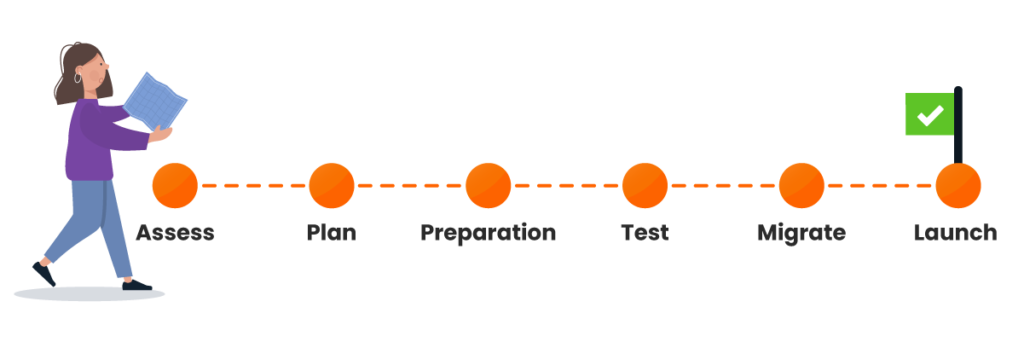
For the smoothest migration to Jira Cloud, we’d urge you to follow these six phases, as recommended by Atlassian:
- Assess
- Plan
- Preparation
- Test
- Migrate
- Launch
Although we’re expanding on the “Preparation” phase with a few extra bonus tips.
We’ll cover the highlights of each phase below, but Atlassian has provided a ton more information about migration phases here, which is well worth a read.
Assess
The work you do in this section (and there’s a pretty big amount to get through) will inform the approach you take to your migration. If completed fully, this work should lay the foundations for a smooth and well-planned Cloud migration experience.
You’ll need to:
- Review your existing Atlassian landscape, from your tech stack to customizations, to understand exactly what you’re dealing with in your DC or Server instance.
- Have a clear picture of what you’d ultimately like to achieve with Cloud. This could include new or improved ways of working, standardization, and your overall team/organization goals.
- Consider the future shape of your Cloud footprint – will you be consolidating instances, for example?
- Look at your migration tooling and resource.
- Begin thinking about which stakeholders in your organization you’ll need to engage with for the migration.
- Evaluate your app (plugin) usage (more on this later).
- Consider growth and scalability.
- Think about your user management and whether you’ll need Atlassian Access for enhanced security and access management.
- Review the shared responsibility model between you and Atlassian in terms of security. (Take a look at Atlassian’s Trust Center. It’s pretty comprehensive and offers some great resources to share with your stakeholders.)
Now, if you’ve run through all of the above points and answered the many questions raised, you should be in a strong position to judge the potential complexity of your migration. Just how simple (or not) is it going to be?
Generally speaking, large amounts of data or users, a high number of apps or significant customizations can all lead to a longer and perhaps more complicated Cloud migration.
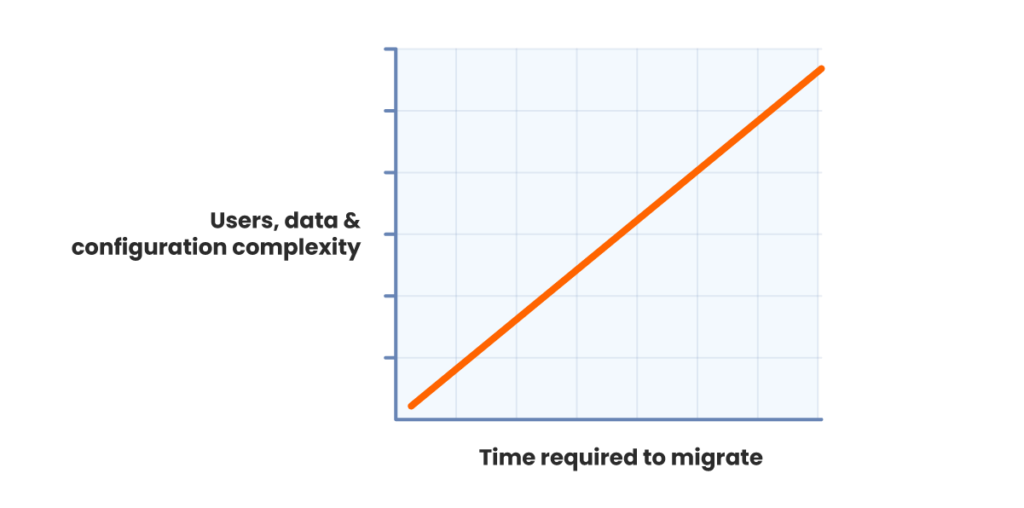
Gauging the complexity will help you better plan your timelines, ensure your resourcing is sufficient, and manage stakeholder expectations.
Audit your Jira site
This is a really important part of the ‘Assess’ phase and is often forgotten or completed in a hurry. But don’t worry, we’re here to guide you through it.
As a starter for ten, review how many of the following you have in your current instance:
- Inactive apps or users
- Duplicates
- Empty or inactive projects
- Data no longer in use
Doing this manually can be TOUGH. We bet the thought of combing through all your Jira data is enough to give you sleepless nights!
To help you get started with ease, we’ve created this super helpful Jira Audit template. It’s an entire template to guide you through the key parts of a Jira site audit.
A step-by-step guide to auditing your Jira Data Center site.
Download your copy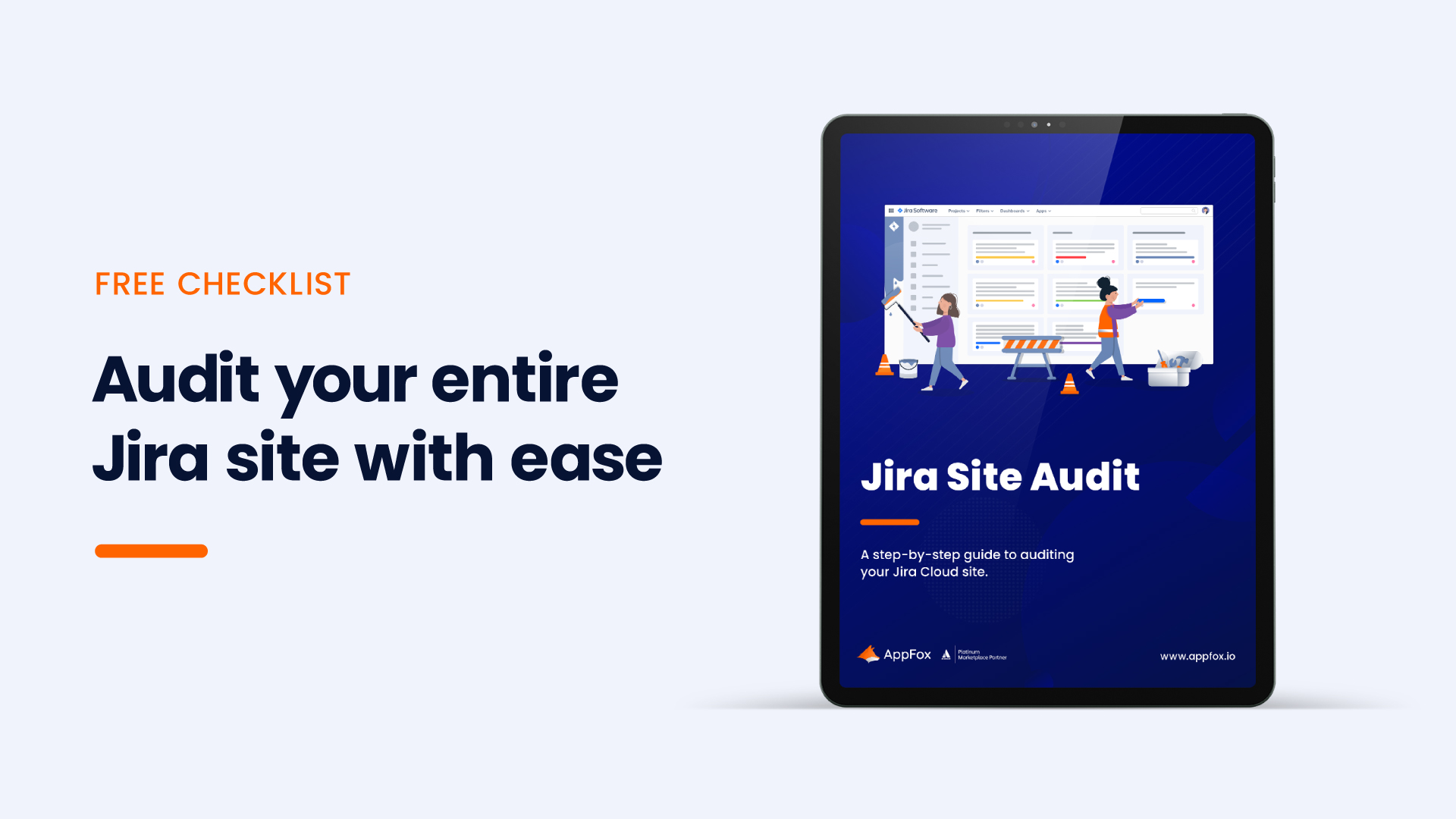
Need the Cloud version of the Site Audit guide? Get it here.
Speed up your audit with third-party tools
There are also tools that can help to automate or streamline this kind of manual work. Which is important – not only because it saves you time, but because it can reduce the risks of you missing something, or making an error.
The Atlassian Marketplace is thriving with apps designed to make teams’ lives easier when preparing for a migration. Optimizer for Jira is just one of those apps, and it’s the perfect tool for this type of scenario.
You can use it to analyze and get a bird’s eye view of your Data Center or Server instance. With Optimizer, you don’t have to go hunting for duplicates or inactive users. Instead, it provides a health check that identifies potential problems such as inactive projects, unused custom fields, duplicate screens, and more.
Our friend and Jira expert, Alex Ortiz, describes it as giving you a ‘50,000 ft view of everything that’s going on in your Jira’, which is incredibly valuable.
By spotting problem areas or red flags, you can quickly assess exactly what you’re dealing with ahead of your Jira migration. And, as we know, this level of understanding is crucial to help you prepare for your Cloud migration.

Optimizer for Jira is also available for Cloud so you can keep your Jira in top condition after you have completed the migration
Okay, that was a fairly hefty first phase, wasn’t it? But we did it! Now, let’s move on to the next stage.
Plan
This next stage very much builds on all the work you did in ‘Assess’. But rather than looking back and evaluating your current usage, this phase is all about looking forward and assembling the people, processes and tools you need to get started:
- Plan out your key migration team. Roles could include Project Manager, Jira Admins, Security and Legal Team, Product Champions and more.
- Establish clear guidelines around roles and responsibilities
- Create communication channels so that everyone is kept in the loop.
- Decide what data you want to keep. By this point, you should have completed your site audit, so you’ll have a good idea of what is valuable and what needs to be removed. There’s really no point migrating a ton of old, outdated, or even worthless data into your new site.
- Choose your Jira Cloud migration method. Often, an ‘Optimize and Shift’ approach is the most suitable. We’ll explore different migration methods in more detail in this section.
- Get set up in Jira Cloud! This hinges on one question: Are you going to do a free Cloud migration trial, or head straight to purchasing your new Cloud site?

If you work for a global organization, think about how downtime will impact your international colleagues. You’ll need to consider different timezones and even potentially public holidays in different regions. Your preferred downtime window may not work for teams in a different timezone, so give them plenty of notice and prepare for some pushback.
Got all that sorted? It’s time to move on to the Preparation phase.
Preparation
When you’re setting out your migration project plan, make sure to leave enough time for this phase. Preparing your people, processes, environments, and data can take anywhere from a few days (unlikely, we’ll admit) to a good few weeks or sometimes months.
- Start communicating with your stakeholders and team.
- Put together a comprehensive checklist with step-by-step actions and owners assigned to each one. Atlassian calls this a ‘runbook’ and has put together a useful video that will guide you through how to create a runbook yourself
- Clean up your existing instance. Now, this is where Optimizer for Jira comes into its own and can really help you clean up your Jira site before the migration begins
- Think about post-migration training and support for your people
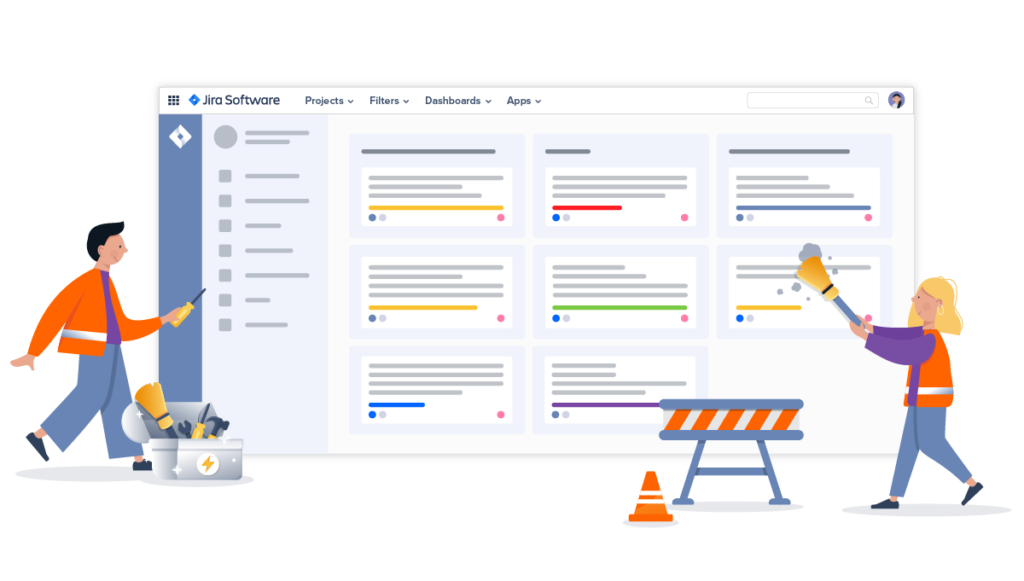
Cleaning up your Jira site before a migration
A quick clean-up will remove unwanted data ahead of your migration, which in turn can make it a smoother and (sometimes) quicker process.
This is particularly important for the Optimize and Shift method, where you need to ensure you complete the migration within just one downtime window.
Now, we’ve written a LOT about Jira clean ups (boy, do we love them), and a ton of work goes into them. Usually we’d recommend committing to a full clean up schedule, and making sure that you’ve also invested in pre-clean up communications, stakeholder engagement.. the list goes on.
But in reality, if you’ve never done a Jira clean up before, we know that you just need to get the job done ahead of your migration. So, whilst we would urge you to read our full Jira clean up series, today we’re just going to focus on the quick wins to help you prepare for your move to the Cloud.
In advance of this clean up, you should have already completed your site audit (remember this from the ‘Assess’ phase?). This means you should already know where problem areas lie in your Jira.
This could include thing like:
- Inactive or old users
- Empty or inactive projects
- Duplicate custom fields
- Inactive custom fields
- Old issues
- Unused workflows
Now, again, this is where Optimizer for Jira can be really valuable. Instead of manually deleting or archiving old data, you can use Optimizer to make bulk updates. When you have potentially hundreds, if not thousands, or inactive fields or duplicates in your instance, bulk actions are a life saver.
Again, if you have a few moments (perhaps with a coffee and cookie to keep you company), why not let Jira expert, Alex Ortiz, guide you through using Optimizer for your pre-migration clean up?
And just remember, you can get your very own 30-day free trial of Optimizer for Jira from the Atlassian Marketpalce. This is the perfect way to test out Optimizer before committing to purchasing it.
Test
With such a large project and significant business outcomes riding on it, you will want to practice!
Running a test migration will help give you an idea of timescales, uncover any challenges lurking in the background, and indicate how well-prepared you are (or whether there’s more work to do in that area…).

Remember, it’s vital that you back up your data before performing any kind of test.
After a test migration, it’s also a good idea to run some UAT (User Acceptance Testing). This means your users can make sure tasks and activities are running as expected and, again, shed a light on any potential issues you weren’t already aware of.

Keep your Server or Data Center instance for a few weeks post-migration. It can be a useful safety net!
Migrate
Okay, now we’re getting to the good stuff.
Hopefully it goes without saying that your people will have had plenty of notice that the migration is coming. Work, resourcing and deadlines should all have been planned accordingly so that all parties can approach the migration panic-free.
To make sure there aren’t any last minute changes, it’s always a good idea to set your site permissions to ‘read-only’ ahead of your migration.
It’s then time to migrate! You’ll probably want to run a quick QA test on your data to make sure everything is working as expected. You may also have to do a few post-migration tasks, like updating URLs.
Launch
By this stage, you should have a shiny new Jira Cloud site ready for you all.
Again, for us the most important thing here is to communicate with your team.
Cloud is now here – so what training or support will they receive? How can they solve or escalate any challenges they run into? When will they start seeing benefits from the migration? What can they expect?
Manage expectations, don’t promise the world and maintain visibility: These are key for a happy post-migration transition.

Introduce post-migration clean ups. If you don’t already have one, this is the ideal time to introduce a clean up routine. Everyone will be more engaged with Jira than usual, so use this focus to establish a culture of strong governance, accountability and regular clean ups.
So, now we’ve run through the six stages of a typical Jira Cloud migration, it’s time to look at your migration methods.
Migration methods when moving to Jira Cloud
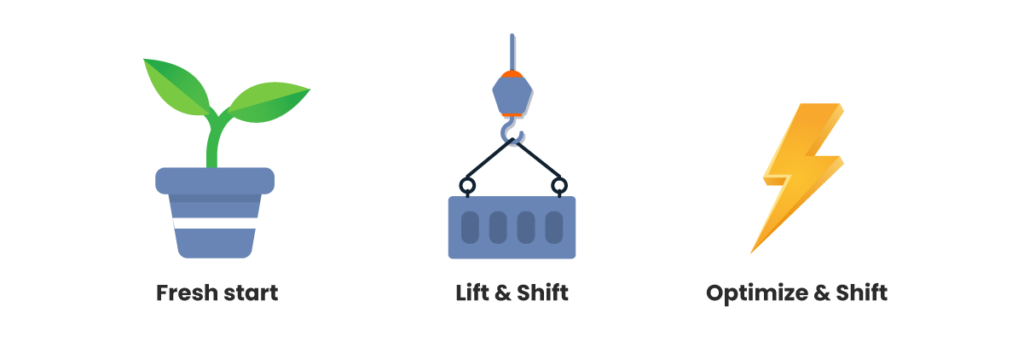
There are three recognized Jira migration methods:
- Fresh Start
- Lift and Shift
- Optimize and Shift
The Fresh Start approach is when you have a brand new Cloud site. We totally see the appeal of a clean slate, leaving all your old data and configuration behind. But, longer term, it can be harder for your teams to settle in to using another brand new instance, and there may be ongoing training requirements.
Generally, Atlassian promotes the Lift and Shift method, which is where you essentially pick up (lift) your existing data and config and shift it to your new Cloud site. It’s fast and easy, but it does mean that you risk carrying old or unwanted data and settings over to your new site.
We favor the Optimize and Shift approach. It is more involved before your migration, as you really need to take the time to audit and clean up your existing site. However, the benefit is that you can be confident that the data you’re migrating to your new cloud site will be exactly what you need and want going forward.
Your migration takes place in a single downtime window for both the Lift and Shift and Optimize and Shift methods. This can reduce the impact on your people and projects, as downtime (if all goes smoothly) is limited to just one timeframe.
The only time you’d probably need a more specialized approach is if you have over 10,000 users (or something else significant that further complicates your migration.)
Review your third-party apps
As part of your Jira optimization ahead of your migration, you’ll need to conduct a thorough review of your apps. You might want to consider:
- How many apps are being used?
- Do you have multiple apps delivering the same purpose?
- Is the app functionality available natively in Jira Cloud?
- Have any apps expired?
Crucially, you want to be asking yourself whether you still need all the apps in your current instance. Is it worth migrating them all over to the Cloud, or are some no longer relevant?

Once you’ve determined which apps you want to keep, you’ll need to find out whether Cloud versions exist, or whether you’ll need to find an alternative app all together. If your app does have a Cloud equivalent, do check functionality, as this can differ across Cloud and DC/Server versions.
Double check your Cloud apps’ privacy and security practices too. All Atlassian Marketplace Cloud apps need to comply with Atlassian’s security requirements, but it’s worth checking which other security standards they might meet too.
Any doubts? Reach out to your app vendor for a conversation (we’re all a friendly bunch, promise!).
Communicating effectively at all stages of the migration
“The art of communication is the language of leadership”
James Humes
Yep, we cannot overstate the importance of communication in the run-up to your Cloud migration.
Think about the people at the heart of your migration project. From end users to the folks in Security and Compliance, people will have questions – and you will have to have the answers ready for them.
Try to pre-empt their concerns and queries. These could range from downtime expectations to the availability of Jira cloud onboarding materials.
Nominating or appointing some internal Jira Cloud champions can help here, and they’ll be able to help you support cultural change and push back where needed.

Minimize the number of communication channels you use. You want to keep updates to a few core platforms, so everyone knows where to find information. It can also be useful to centralize user requests. JSM is a great tool for this!
Depending on your internal resources and skill level, it can really help to work with a Solution Partner. Don’t try and take this on alone if you don’t need to!
Choosing a dedicated Atlassian Consultancy team can support you and your people with a smooth and professional Jira migration to the Cloud, freeing up some of your time to focus on communications, expectation management, and stakeholder engagement.
When planning your communications, prepare ready-to-go templates with approved messaging and information. This can help you get information out quickly and efficiently to stakeholders, and you can then follow up with personalized comms when needed.

You also need to perfect a balancing act. You see, you need to get your team excited about the benefits of this work. How will moving to the Cloud benefit them? What positive impact will it have on their work? Why is this a good thing?
Alongside this cheerleading, however, you also need to manage expectations. Cloud benefits won’t appear overnight. There may be teething problems, or initial frustrations. And it’s also important to anticipate worst-case scenarios, such as project delays or unexpected downtime. You can then plan how to approach them.
It’s a tricky balance.
Ultimately, you want to avoid jargon. Try not to make rash promises about the magic of Cloud. And remain consistent. Set the tone of your comms approach early on, and manage expectations around how often you’ll provide updates.
In closing
We’ll leave you with words sure to put a smile on your face: Your job is not done once the migration is complete.
What’s that? You’re not overjoyed to hear that?
We get it. You’ve worked so hard planning and preparing for this Jira Cloud migration, and now we’re telling you that once it’s all, finally, over, it’s actually…just the beginning.
Yep, once your migration is complete, it’s time to consider future training for your teams, carrying out your post-migration clean-up activities, and focusing on continually optimizing your Jira site.
The good news is that this kind of change often leads to enhanced working practices and a shared understanding of how important it is to maintain your Jira, which often bodes well for long-term success, collaboration, and scaling.
We’ll leave you on that positive note. We hope you feel more confident now that you can prepare for your migration.
The future is most certainly Cloud – and we’re excited to be a part of it.
